Ghent University

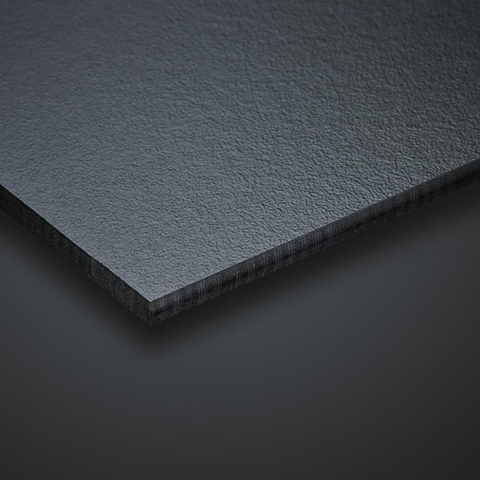

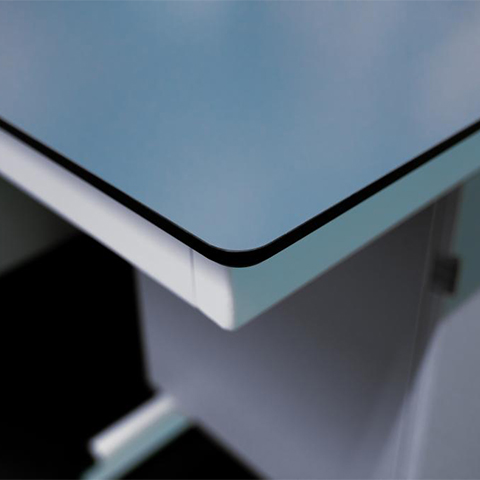
BIOSAFETY AND SUSTAINABILITY FOR A HIGH PERFORMANCE LABORATORY
Ghent University recently constructed a new 2,500m² BSL-2 laboratory on their Heymans Campus.
Christophe Tuypens, responsible for building management, sheds light on the importance of cleanability, prevention of bacterial growth, and the search for sustainable materials.
Potteau, the leading Belgian lab furniture manufacturer that fitted the new laboratory, highlights their unique approach, and explains the preference for Trespa® products.
.8500980663628684230.jpg)
NEW 2,500M² BSL-2 LABORATORY FOR GHENT UNIVERSITY
Ghent University is ranked among the top 100 universities worldwide – with 50,000 students and a global reach, making it one of the leading European institutions in higher education. The extensive campus encompasses almost 300 buildings totalling 100,000m², including cutting-edge fundamental and applied research facilities.
Recently, a building from the 1970s located on Campus Heymans was in need of an extensive overhaul. Rather than opting for a remodel, the University Management decided to replace the building altogether. As a result, a brand-new facility now embodies Ghent University’s search for excellence. The premises, which were built at a cost of 20 million euros, include a 2,500m² research laboratory with biosafety level 2 (BSL-2) requirements.
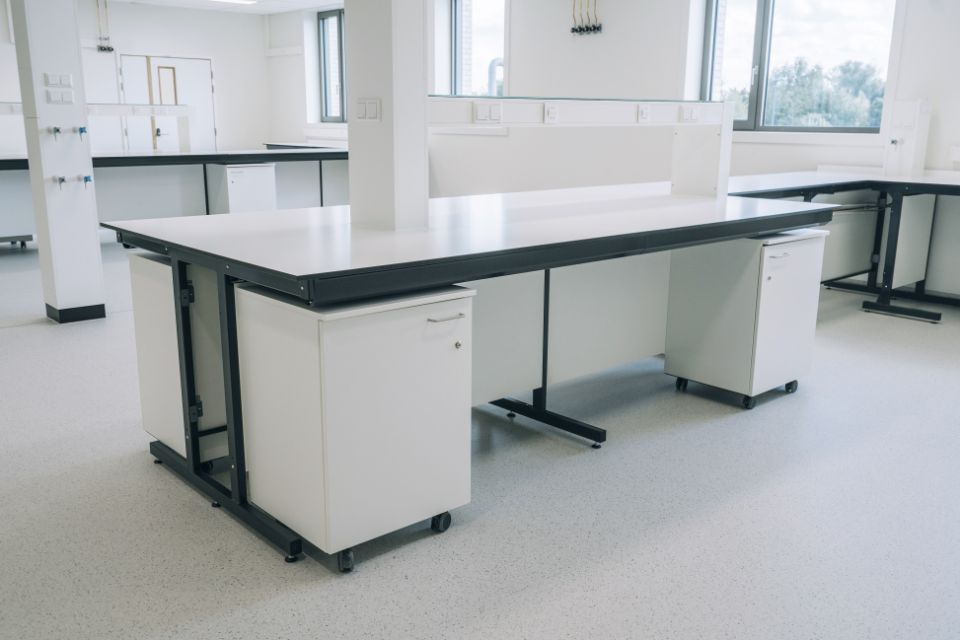.jpg)
ENSURING BIOSAFETY WITH EXCELLENT CLEANABILITY
Christophe Tuypens is in charge of the building and facility management at Ghent University. He comments: “A BSL-2 laboratory’s activity can involve pathogens and infectious agents that potentially affect humans. Therefore, outstanding cleanability of furniture and surfaces is an absolute prerequisite. In addition, materials that do not support bacterial growth are essential. That is why Trespa® TopLab®, which we are using for worktops, benches and in some cases for walls and in ancillary rooms, has the ideal material properties”. “We are very familiar with Trespa® products”, explains Christophe Tuypens.
“They are a go-to choice for BSL-2 environments. For certain chemistry applications, we tend to favour ceramic worktops, but in lab contexts where biosafety level 2 is required, Trespa® TopLab®
has a clear edge over other alternatives like ceramic, glass or epoxy.
The decisive advantages are the material’s shock and impact resistance, its durability and above all what I call its ‘impenetrable’ finish. This is why Trespa® TopLab®
has been used in quite a few facilities across the campus – and why it was very well suited for the new lab at Campus Heymans”.
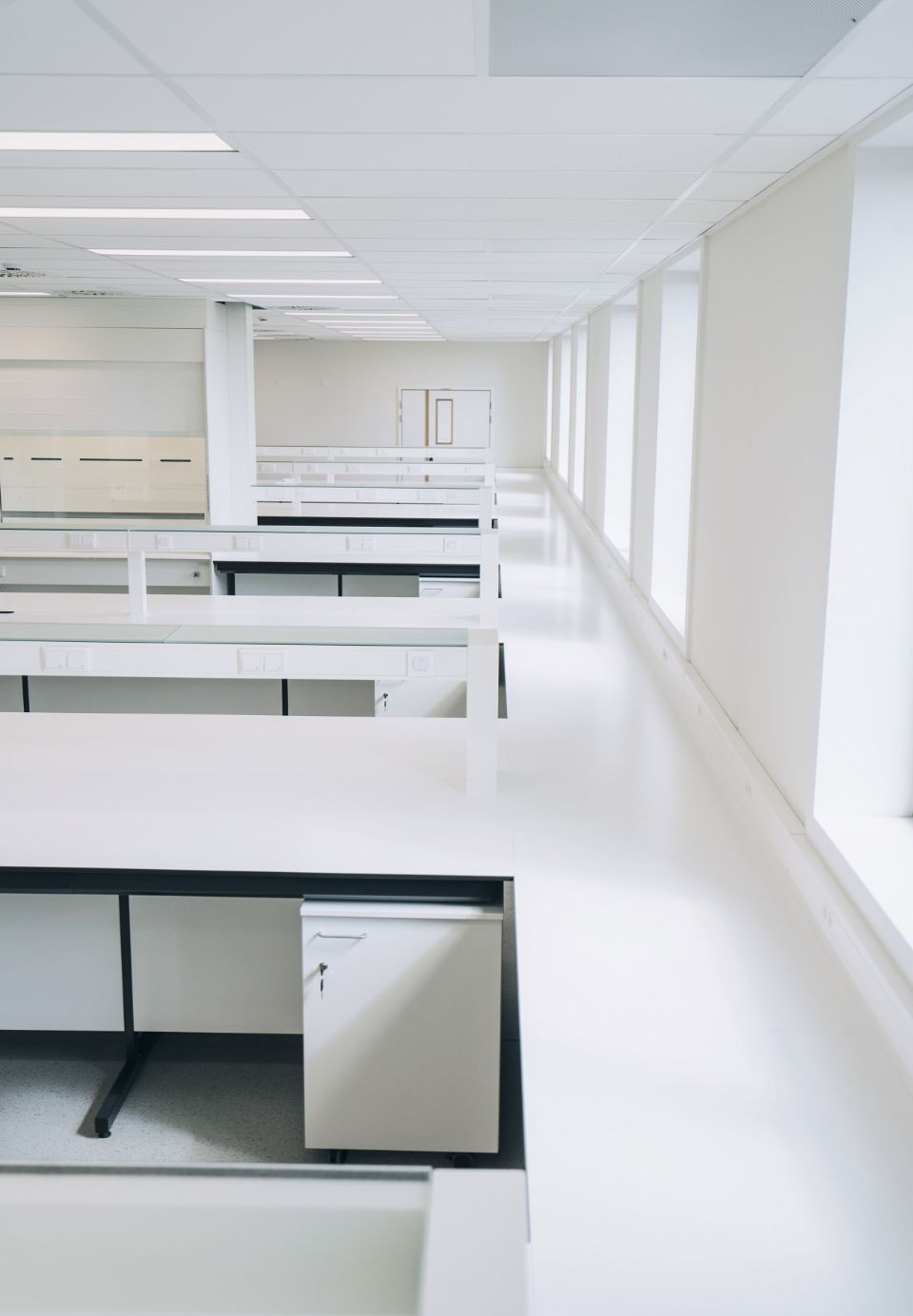.jpg)
REDUCING THE LAB’S CARBON FOOTPRINT BY SWITCHING TO A MORE SUSTAINABLE ALTERNATIVE
While Trespa® TopLab® has been a tried-and-tested solution at Ghent University for many years, the new research facility marks a turning point in terms of sustainability: for the first time, a new version of the panels has been used.
With a markedly improved environmental profile, Trespa® TopLab® PLUS ALIGN addresses the concerns and aspirations of today’s opinion leaders, users and specifiers.
Christophe Tuypens points out: “Ghent University is indeed looking for sustainable options, as we want to lead by example and inspire others. Striving for sustainable solutions in research buildings, though, is an especially challenging task. This is why we welcomed the suggestion of Potteau Labo, the company that manufactured the lab furniture for our new facility. They made us an offer
that we simply couldn’t refuse”.
.jpg)
A SMOOTH SURFACE THAT DOES NOT SUPPORT BACTERIAL GROWTH
Trespa’s proprietary EBC technology (Electron Beam Curing) is at the core of the characteristics that define
Trespa® TopLab® PLUS ALIGN. It further enhances the specific qualities of HPL (High Pressure laminate), a material already strong and durable in itself.
The EBC process results in an exceptionally hard, closed surface finish that does not support bacterial growth.
It also optimises cleanability – and has been rated as “Excellent” for its cleanability properties
by the German Fraunhofer Institute.
.jpg)
HIGHER BIO-BASED CONTENTS, LOWER CARBON FOOTPRINT
On its path to carbon reduction, Trespa has been focussing on improving the company’s and the products’ sustainability for decades. Trespa® TopLab® PLUS ALIGN is based on a breakthrough innovation: by replacing 50% of the fossil-based resins in the product’s core with natural lignin, Trespa has significantly raised the bio-based contents of this product.
As a result, Trespa® TopLab® PLUS ALIGN contains a minimum 83% bio-based content, and stores more carbon in the material itself than is emitted during its production, as shown in the environmental product declaration (EPD).
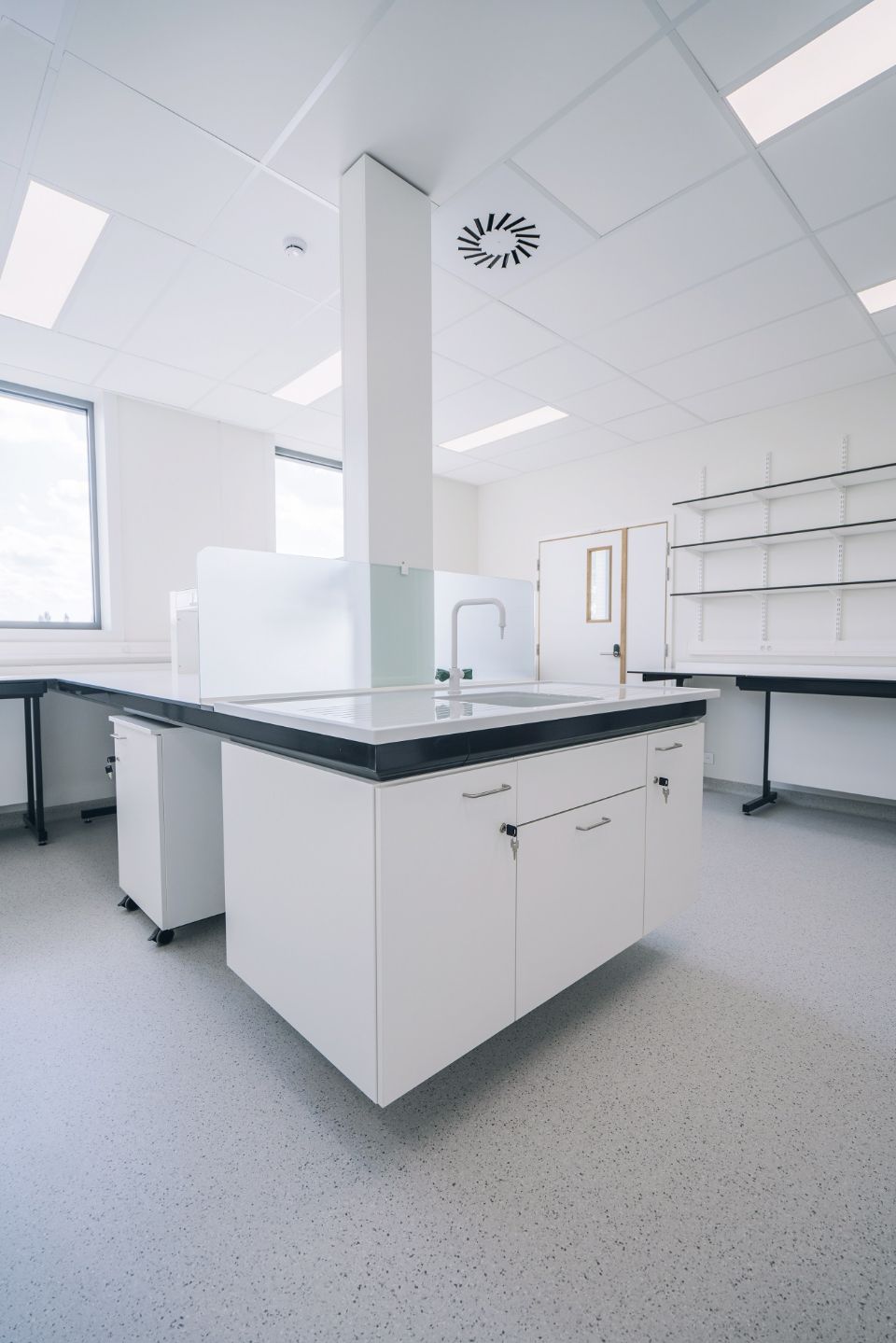.jpg)
QUALITY THAT SPANS FIVE GENERATIONS
As far as laboratory furniture is concerned, Potteau is a household name in Benelux.
A fifth-generation family company, Potteau has been the Belgian market leader in its field of expertise since the 1950s. While sophisticated museum and hotel projects as well as the production of door frames are strong areas of competence, the company’s main focus is clearly on laboratories, which account for over 50% of the activity. Stephanie Cassidy explains: “Flexibility and highly professional execution, from planning to finished installation, are our main strengths.
Our standard range is just the starting point: depending on the client’s needs and expectations, we can go all the way to fully bespoke solutions. This clearly sets us apart from the competition.
Interestingly enough, our preference for Trespa is not decisive, even if Trespa® has belonged to our preferred suppliers for as long as I can remember. All our competitors use Trespa® products. In the end, time and again, it is our reputation that tips the scales in our favour”. Douglas Vanbeveren adds: “When Trespa is an option, we never need to convince anybody. Trespa is so well known that clients would not say ‘We have chosen HPL’. They just tell us, ‘We want Trespa’. With that said, our highly educated and qualified team makes the difference as well. Many colleagues have been with us for 20 or even 30 years. Whenever needed, they can tap into an exceptional wealth of experience and know-how. This helps us tackle even the most demanding project under ideal conditions”.
.jpg)
LOWERING THE PROJECT-RELATED CARBON FOOTPRINT
As a public institution, Ghent University was bound by strict tender procedures. Accordingly, it was Potteau who suggested using Trespa® products as part of its winning bid. Christophe Tuypens underscores: “As previously mentioned, we know Trespa® TopLab® very well indeed. But the constraints of the tender did not allow us to specify a supplier or a specific brand”.
Stephanie Cassidy goes into detail: “We did not simply base our quote on Trespa® TopLab®. We were the ones who offered to go all the way and use Trespa® TopLab® PLUS ALIGN. Even if for now, people are used to Trespa® TopLab® PLUS, there is no doubt that in a few years, Trespa® TopLab® PLUS ALIGN will be the new standard. Universities in Belgium are important clients of ours. This is true in particular of Ghent University.
So, giving them a head start was making sense”. “It made sense for us as well. We have our own sustainability goals, and every year, we publish the company’s CO2 balance sheet, which includes our project-related carbon footprint. As a result, pushing Trespa® TopLab® PLUS ALIGN is in everyone’s interest. This is how and why the new lab at Campus Heymans became our first large project with Trespa® TopLab® PLUS ALIGN”.
.jpg)
HESITATION TO ADOPT THIS NEW PRODUCT
Christophe Tuypens underscores: “At the University, as I already pointed out, we are definitely looking into the various potentials for improved sustainability.
This made Trespa® TopLab® PLUS ALIGN undeniably attractive from the outset. But initially,
we were somewhat concerned: the product was brand new, and it felt somewhat like a ‘blind test’. It turned out that the material’s characteristics are essentially similar to Trespa® TopLab® PLUS, which is why we decided to follow Potteau’s proposal and opt for the new, more sustainable version”. “It has been in use since November 2023, and we are now inclined to consider it again. In the near future, we have several buildings to furnish and more work to do in updating our lab infrastructure”.
.jpg)
THE NEW STANDARD FOR HIGH-END, SUSTAINABLE LABORATORY FURNITURE
Douglas Vanbeveren comments: “Clients are increasingly aware of their responsibility in terms of environmental impact. This was evident at the 2024 Laborama trade fair in Brussels. Minimising the carbon footprint has become a major trend, and the demand for sustainable solutions is growing fast.
Trespa is leading the competition when it comes to sustainability”.
“Trespa® TopLab® PLUS ALIGN combines the exceptional durability of Trespa® TopLab® PLUS – a strong sustainability advantage in its own right – with a significantly lower impact on the environment”.
Stephanie Cassidy concludes: “As far as the laboratory on Campus Heymans is concerned, our client
is very pleased with the result. Potteau and Ghent University have worked as partners on a large project that has benefitted all involved parties. We are now looking for additional opportunities at the University and beyond. They will allow us to establish Trespa® TopLab® PLUS ALIGN as the new standard for high-end, sustainable laboratory furniture”.
.jpg)

















